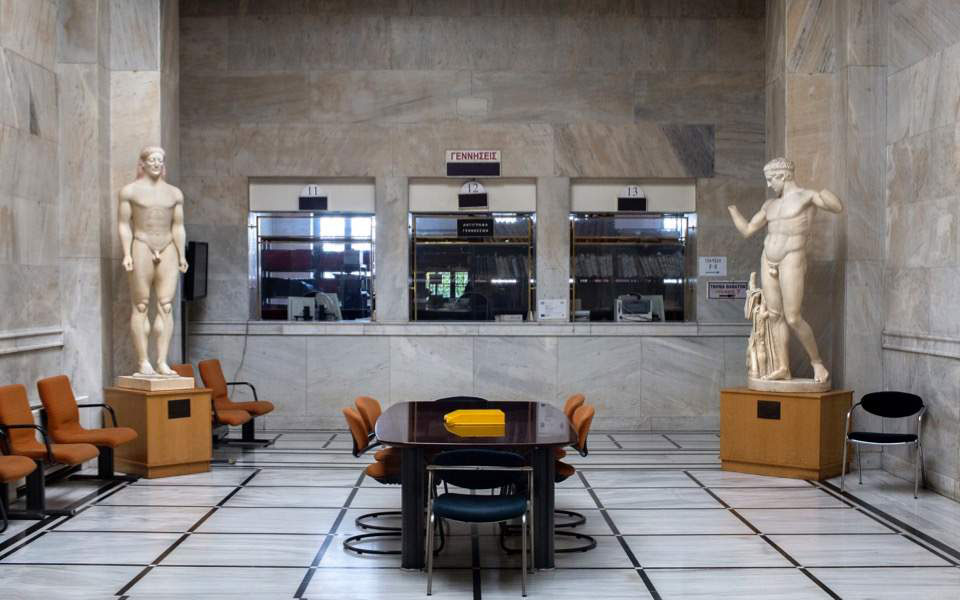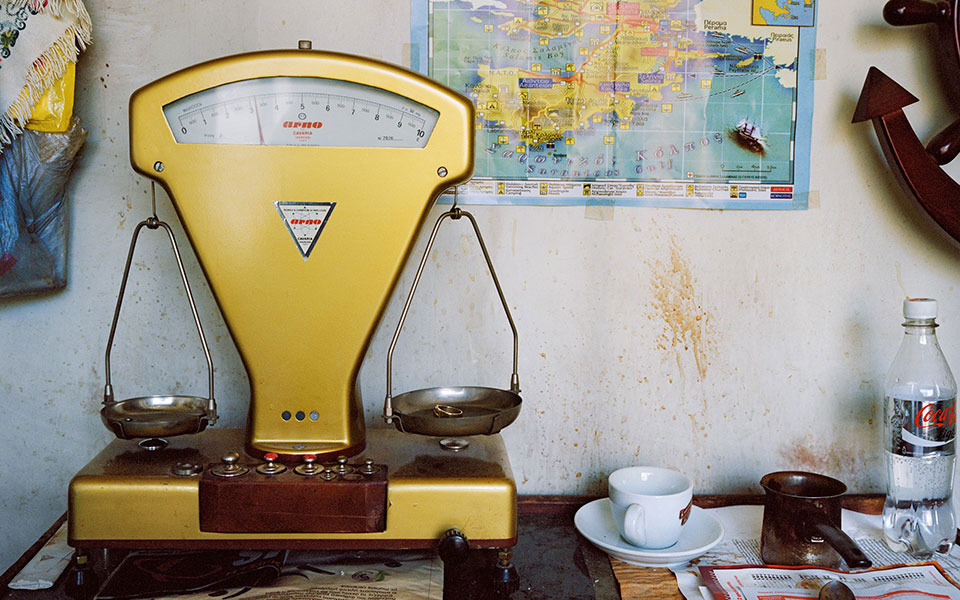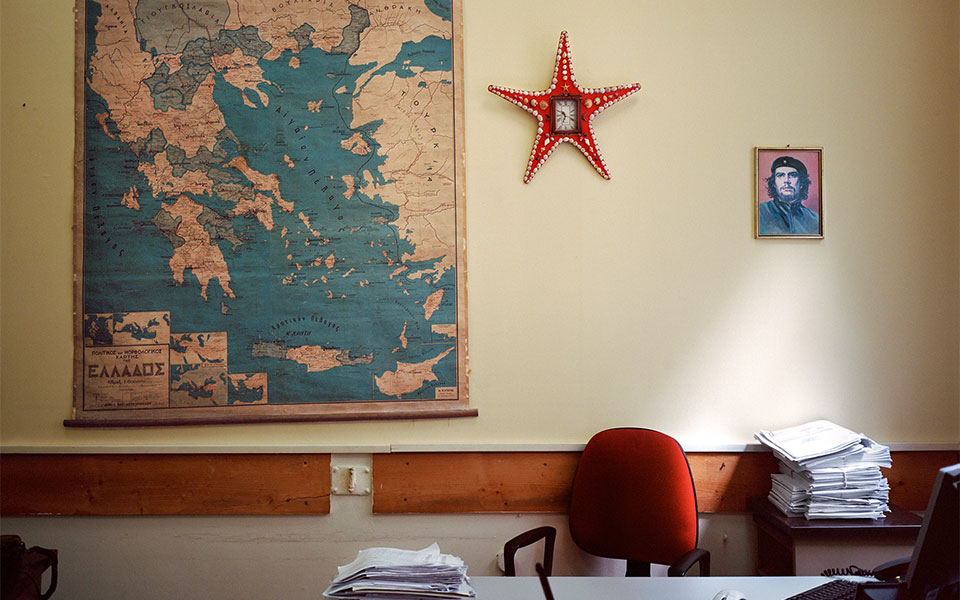Panayiotis Tetsis: Greece in Full Color
From bustling street markets to Hydra’s...

© Eirini Vourloumis
Frequently, when stuck in the queue at some public office or another, I practice my observation skills by taking a look the space behind the counter. Dusty filing cabinets, school-blue cardboard ring binders with grey spines, decommissioned photocopiers, broken shutters and then, suddenly, a photograph of Zakynthos’ famous Navagio Beach stuck on the wall.
In the foreground, an employee is battling waves of paperwork, and in front of him or her stand dozens of citizens in various states of frustration, disappointment, futility, and self-pity.
The exhibition by Eirini Vourloumis that opened recently at the Benaki Museum on Pireos Street, focuses precisely on that backdrop that every Greek citizen has seen firsthand: the world of public buildings, the state’s uncared-for facade.
Benaki Museum, 138 Pireos St
3 May – 27 May
Opening Hours: Thursday & Sunday 10:00 – 18:00, Friday & Saturday 10:00 – 22:00
In Waiting, a book of the work by Eirini Vourloumis published by Hatje Cantz is available for purchase both at the Benaki Museum gift shop and online.

© Eirini Vourloumis
The difference is that the photographer has removed the human element from the frame. The spaces are plain and deserted, and that provides a deeper sense of them. They are caught somewhere between the Balkans and the Soviet Union, as if in a premodern state.
Educated at top schools and having lived for 11 years in the US, the Greek-Indonesian photographer collaborates with major international publications. This particular body of work titled “In Waiting” was created as a natural counterweight to her work as a photojournalist focusing on the economic and refugee crises in Greece. Through it, she sought to shed light on a different, rarely seen aspect of the story – and she has succeeded. The curation by the talented Katerina Stathopoulou, an assistant curator at New York’s MOMA, is exceptional.

© Eirini Vourloumis
At the exhibition’s opening night a host of friends came to see the very fine work up close. The evening was pleasantly warm under a clear sky. The museum’s open-air courtyard was full. Vourloumis’ father, Panagis Vourloumis and his Indonesia wife Ediana were rightly proud of their daughter, who appears to have inherited the artistic gene from her grandfather, the renowned painter Andreas Vourloumis.
In attendance were artists such as Manolis Charos, Costas Varotsos, and Dafni Angelidou; the gallerists Jean Bernier, Marina Eliades and the Kalligas family of the Skoufa Gallery; people of the shipping world such as Petros Pappas; as well as the Indonesian ambassador.

© Eirini Vourloumis
For Greeks, its an exhibition worth seeing as a form of self-discovery. “I already know what Greek public offices look like,” one might say. The truth, however, is that in Vourloumis’ photographs one can see something more than the fragments visible behind the counter. One can begin to understand the imprisoned past that is in waiting for the future. A country where the pause button has been pressed. Ours.
This article was first published in Greek by Kathimerini.gr
From bustling street markets to Hydra’s...
From sculpture to silent movement, explore...